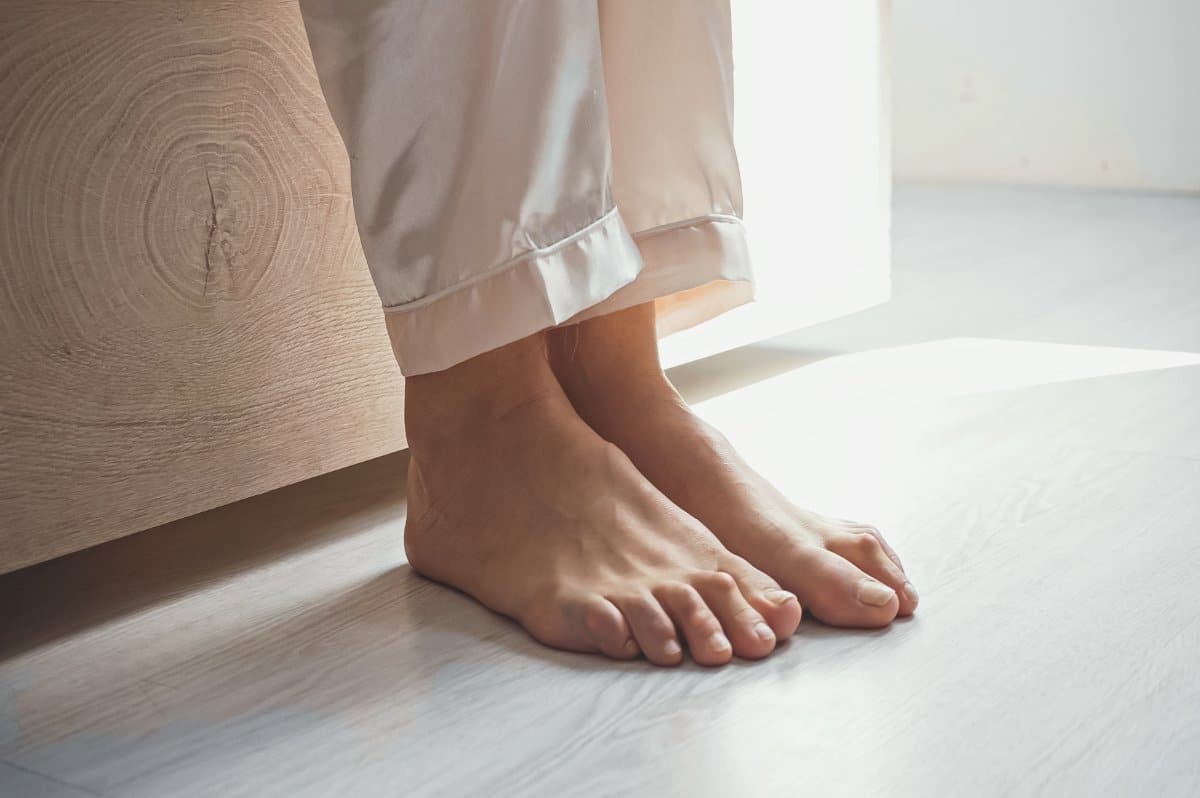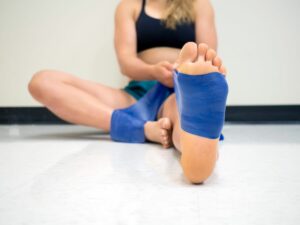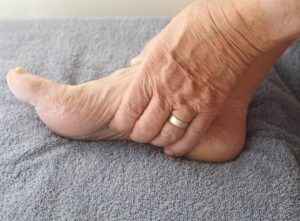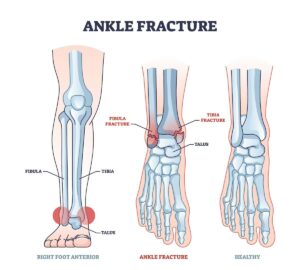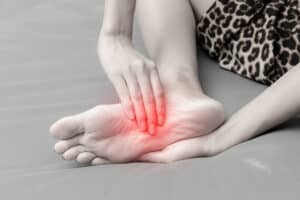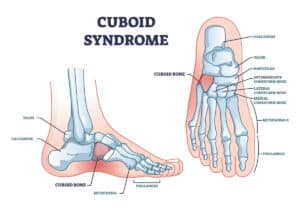Free download: Top 10 Natural & Easy Remedies for Joint Pain from Home. Learn these helpful remedies.
Estimated Reading Time: 11 minutes read

Everyone is unique in the way their feet are shaped. Some tend to have flat feet, others tend to have high arches, and the rest are “normal.”
Does it really matter if you have flat feet or high arches?
Yes!
The type of arch you have can actually have a huge impact on your mobility, risk for injury, and potential pain presence.
Seeing as flat feet and high arches are complete opposite issues, let’s take a look at the differences between the two and what can happen with each.
Table of Contents
Flat Feet
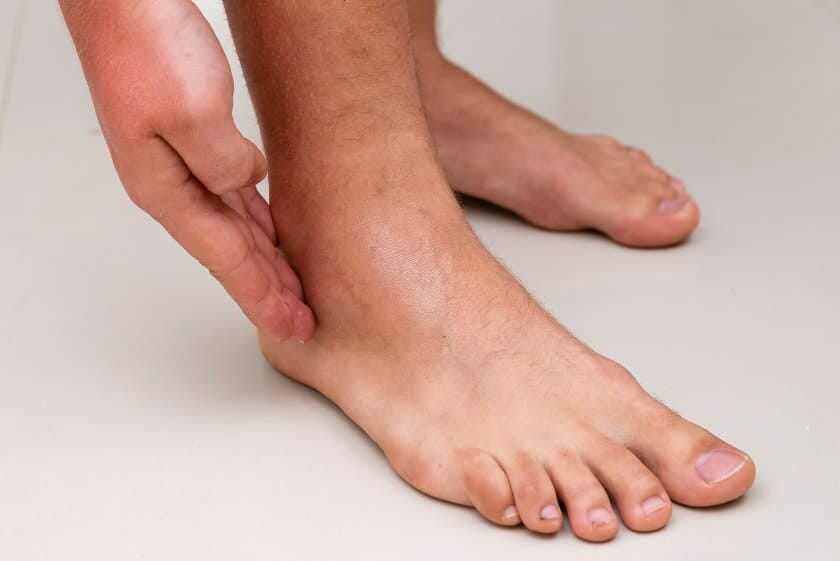
Flat arches, or pes planus, is describing a collapsed foot arch. People with flat feet don’t necessarily all experience foot pain.
Actually, most people with a collapsed foot don’t have any pain at all.
For those who do experience foot pain from collapsed arches, if not treated properly, it can turn into quite the problem.
Signs of Flat Feet
The following are typical signs associated with flat feet:
- Collapsed inner foot arch in standing
- Increased wear pattern on the inside portion of the bottom of your shoes and towards the big toe
- Foot pronation leading to excessive inward rolling of the ankle, or ankle eversion
- Inward deviation of the knees, or genu valgus
- A wet footprint shows an image of a completely flat bottom of the foot; the full arch touches the floor
Causes of Flat Feet
Dropped arches can occur for a variety of reasons. The following include the most common causes and contributing factors for the development of fallen arches:
- A normal arch did not fully develop in childhood
- Previous foot/ankle injury (e.g., tendon rupture or tear)
- Obesity
- Arthritis
- Wear and tear from high impact sports (e.g., running)
- Genetics
- Posterior tibialis
- Foot intrinsic muscle weakness
- Tight Achilles tendon
Signs of a Painful Flat Foot
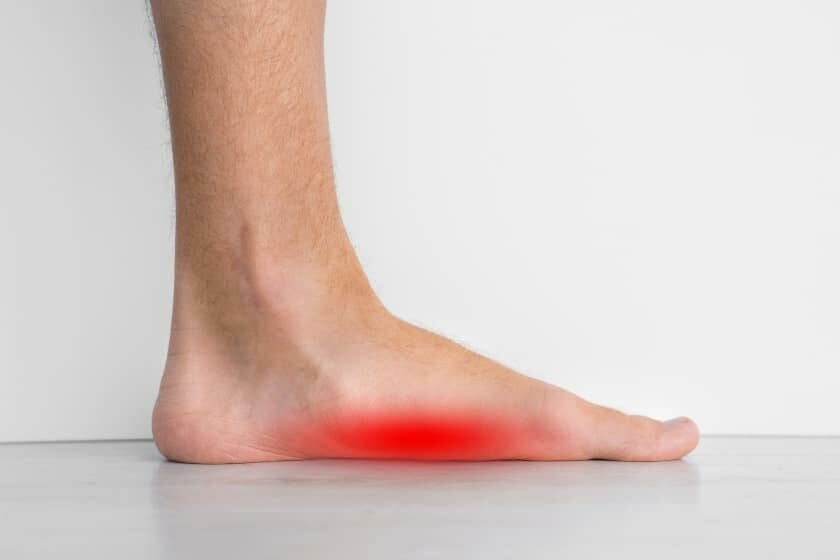
Sometimes those with extremely flat feet can develop pain, especially arch pain. Due to the effects of a flat foot on the normal alignment of the foot, ankle and knee, you can develop pain in any or all of these areas as well.
When you have a painful flat foot, you may notice one or more of the following symptoms:
- Pain in the arch, heel, inside of the ankle or inside of the knee
- Pain with increased activity, especially walking or running
- Swelling on the inside of the ankle
- Reduced pain with increased arch support, such as with insoles
Potential Injuries Associated with Flat Feet
Fallen arches can place you at a higher risk to develop certain injuries.
- Due to the lack of natural arch support and excessive foot pronation, this can place stress on the plantar fascia and make you more susceptible to develop plantar fasciitis.
- Those with a flat arch tend to have a tighter Achilles tendon. If this isn’t addressed, you could become at risk to develop Achilles tendonitis.
- As flat arches tend to cause the ankle to roll excessively inward, this can make the ankle more susceptible to an eversion ankle sprain.
- There have been studies that have found a strong association with knee pain and cartilage damage in those with flat feet. The subsequent inward rolling of the foot and ankle can cause an inward motion at the knee, something more formally called genu valgus.
This places added pressure on the inside compartments of the knees, and can contribute to breakdown within the medial, or inward, portion of the joint.
Treatment for Flat Feet
The good news is there are steps you can take to prevent pain from your flat feet or reduce pain you may already be experiencing.
Proper Shoe Wear:
You should find shoes that fit comfortably and have excellent arch support. Sometimes it may be necessary to also add an insert to your shoe to assist in lifting the collapsed arch.
This is especially important for runners, as runners with a flat arch type are at a higher risk of overuse injuries and stress fractures due to the high nature impact of running.
The best running shoes will provide the above mentioned support, as well as have excellent shock absorption during the run.
A Healthy Diet:
Your body weight can have a significant impact on arch height. If you are overweight, this can place too much pressure on the bottoms of the feet, leading to a higher risk of developing flat foot arches.
For this reason, it’s important to reduce the load on the foot by maintaining a healthy weight. Ensuring maintenance of a healthy diet can help with this.
Exercise:
Flat arches will typically lead to muscle imbalances, postural instability, and overall deconditioned feet.
Muscle imbalances will cause certain areas to become tight and others weak.
Let’s take a look at one strengthening and one stretching exercise geared towards those with flat arches.
1. Arch Doming
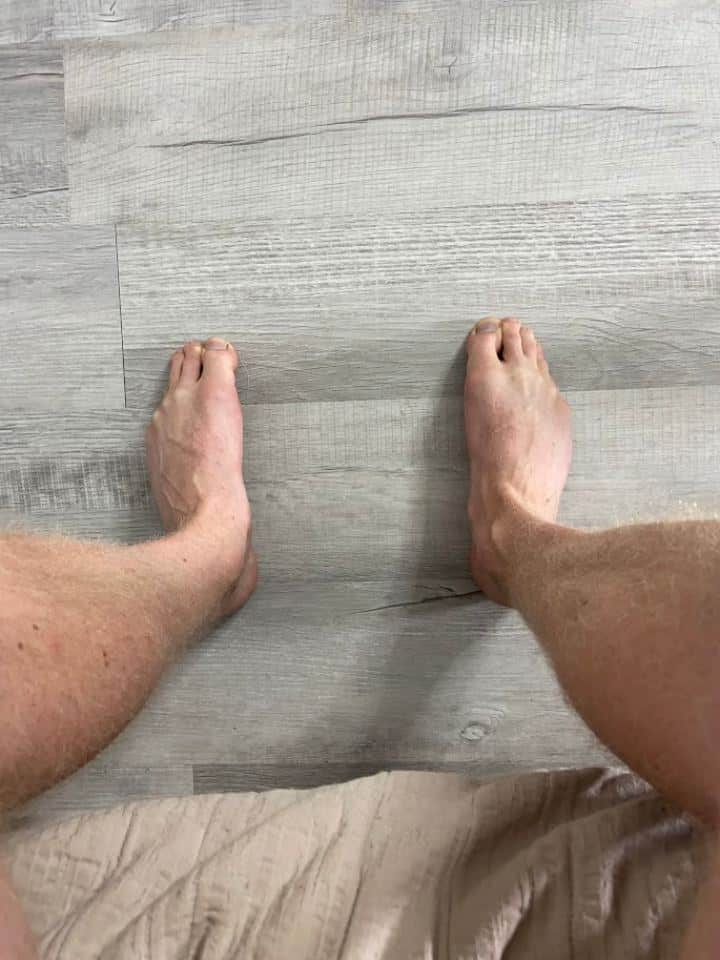
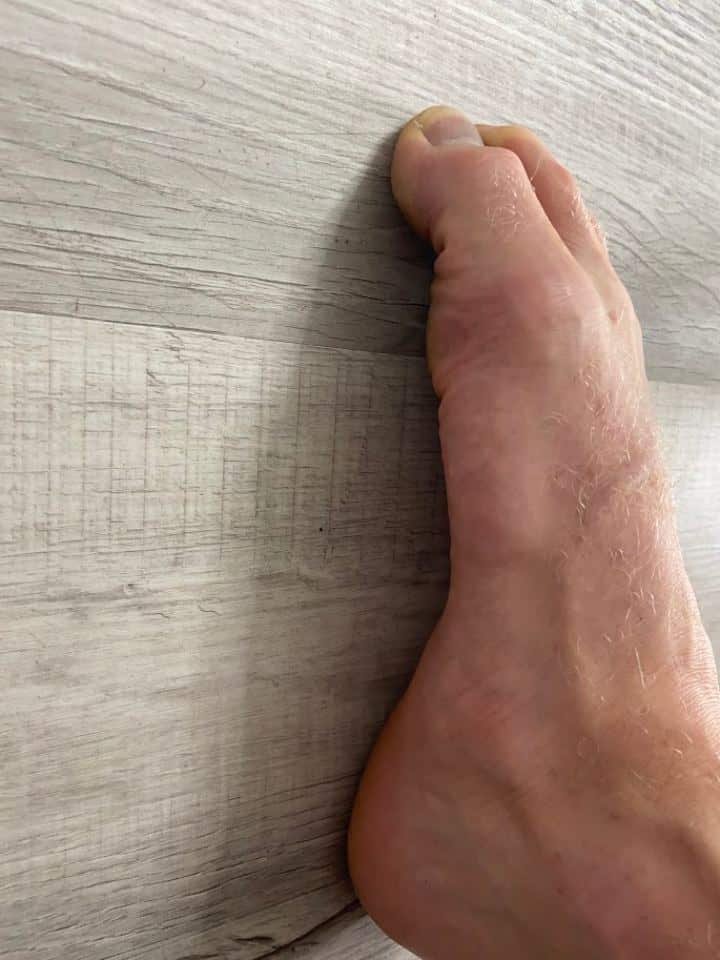
- Starting position: Seated in a chair with the fleet flat on the floor. Shoes should be removed.
- You can practice with both feet at the same time or one foot at a time.
- Squeeze the bottom of the foot and lift the inner arch off the floor, without moving any other part of the foot.
- Hold this lift for 2 seconds, then slowly allow the arches to relax back down to the floor.
- Repeat 10-15 repetitions for 2-3 sets.
2. Calf Stretch With a Strap
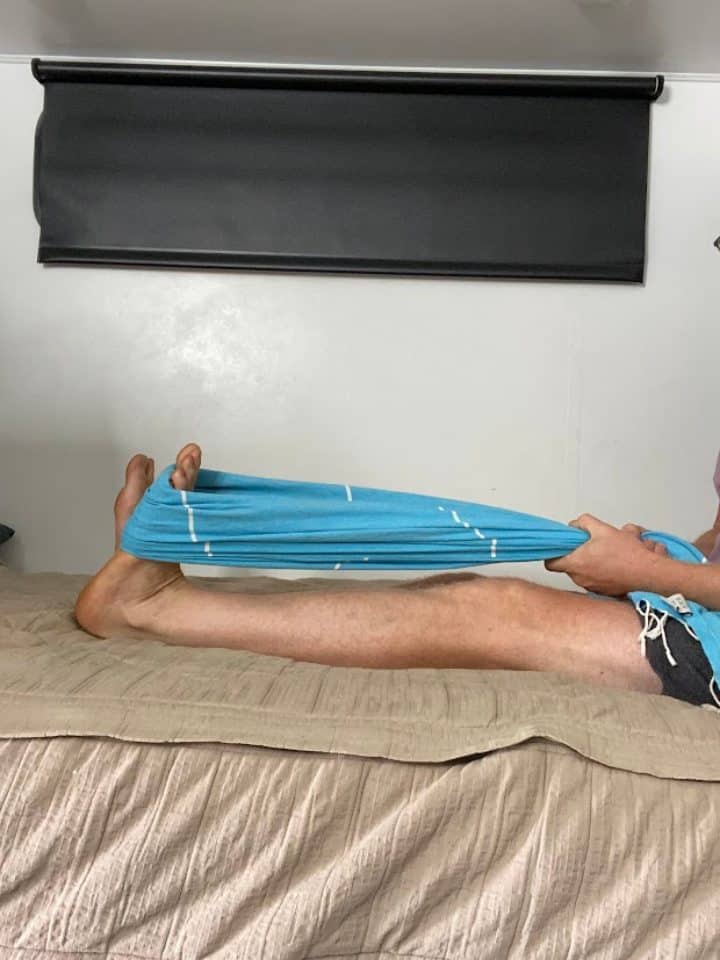
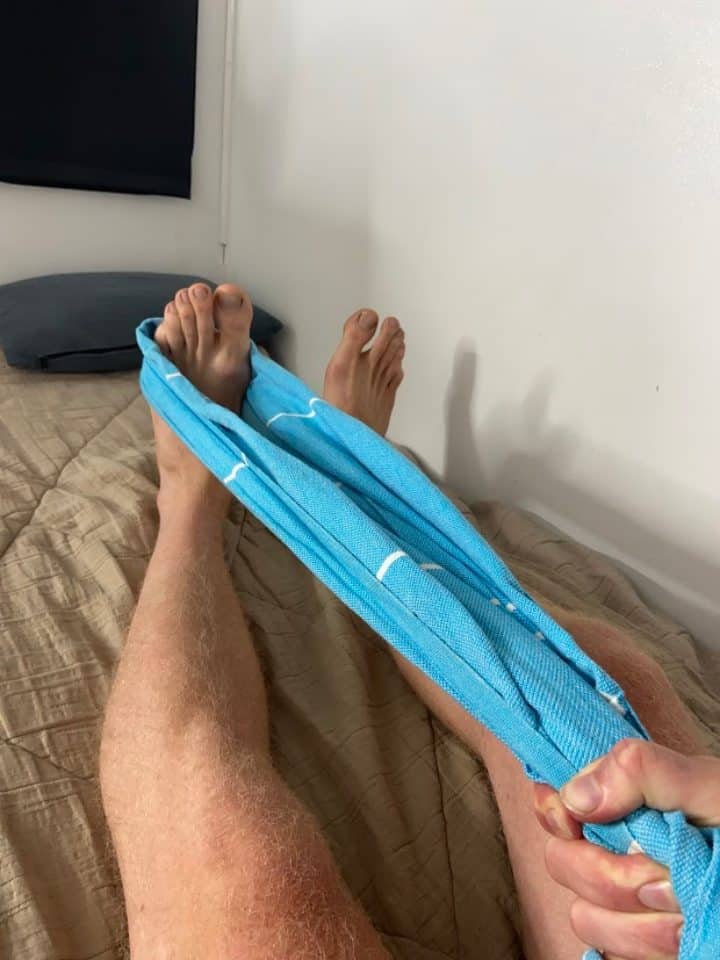
- Starting position: This stretch can either be seated in a chair with the leg to be stretched extended in front of you or sitting on the floor or your bed with the leg to be stretched extended in front of you.
- Using a non-elastic strap (e.g., stretch strap, belt, sheet), loop it around the ball of foot.
- Slowly pull the foot back towards you until a calf stretch is felt.
- Hold for at least 30 seconds or up to 1 minute.
- Repeat on the opposite leg.
Surgery:
Surgery is not typically needed for correction of a flat foot. Normally if it’s indicated, it’s because the dropped arch has lead to a tendon tear or rupture needing surgical correction.
High Arches
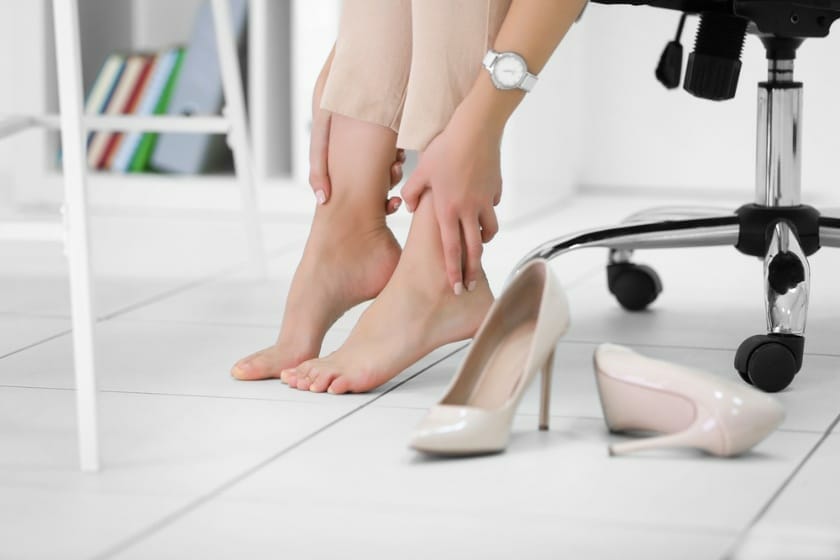
High arches, or pes cavus, is when you have an abnormally high inner foot arch. This is commonly inherited through genetics, more so than a flat foot; however, a high arch can also be a sign of a medical condition beginning to develop.
Similar to a flat arch, some with high arched feet may experience pain, while others don’t.
Signs of a High Arch
The following describe how to tell if you have high arched feet:
- An excessively high inner arch in standing
- Increased shoe wear pattern on the balls of feet, heels, and outside edges of the shoes
- A supinated foot that tends to roll towards the outer edge of the foot
- A wet footprint will usually show an impression of the forefoot and heel without anything between
- Calluses on the ball of foot, heel or outside of the foot
- Toe abnormalities, such as hammertoes or claw toes
Causes of a High Arch
As mentioned above, high arches are commonly linked to genetic inheritance; however, in other cases are an early sign of a neurological condition developing or, not as commonly, the result of an orthopedic injury.
The following are a few examples of neurologic conditions that can cause a high arch deformity:
- Stroke
- Cerebral Palsy
- Spina Bifida
- Charcot-Marie-Tooth Disease
- Muscular Dystrophy
Due to the close association of high arches and neurologic conditions, if you weren’t born with high arches and develop them later in life, it’s important to have an examination performed by a medical doctor to ensure you’re not showing early signs of a neurologic condition.
While not as common, there is also a chance that a severely torn or ruptured tendon could be creating a high arched foot. The most likely tendon involved in this type of injury would be a peroneal tendon.
Painful Symptoms and Potential Injuries from High Arches
If you have high arches, you may be at a higher risk to develop other painful foot and ankle deformities and leg injuries. This is due to the altered alignment and biomechanics of the foot and ankle.
Let’s take a look at some of the most common painful effects from a high arched foot:
- Plantar fasciitis
- Inversion ankle sprains
- Hammertoes or claw toes
- Shin splints
- Metatarsalgia
- Metatarsal fractures, especially in high arched runners
Treatment for High Arches
It’s important to address high arches as soon as they’re noticed. The reasons for this are to help determine if the high arches are a result of another condition and to avoid or relieve any associated discomfort.
Proper Shoe Wear:
Avoid tight-fitting shoes. Your shoes should have a flexible sole, a wider heel and toe, and adjustable laces or straps to help with pain relief.
Use of a higher top shoe that is raised above the ankle can also provide more ankle stability.
Sometimes it may be necessary to use special orthopedic shoes to help absorb the body’s weight, as this can be a challenge with a naturally rigid arch.
Orthotic Inserts or Bracing:
Orthotics may be added to your shoes to help spread even pressure and weight over the foot. This can help add necessary support and stability to the entire foot and ankle to reduce pain and improve functional mobility.
Bracing is needed if high arches are associated with a neurologic condition. This is especially true if that condition has created a foot drop, or the inability to independently flex the ankle for a proper heel strike when you take a step.
Foot drop can be a high tripping hazard and increase risk of falls, so a brace may be needed for safe mobility.
Exercise:
While exercise won’t be able to correct high arches, they can help relieve some of the associated painful symptoms and muscle imbalances.
There are a variety of stretching and strengthening exercises that can be practiced for high arches.
Let’s key in on one specific strengthening and one specific stretching exercise for high arches.
1. Ankle Eversion With a Resistance Band
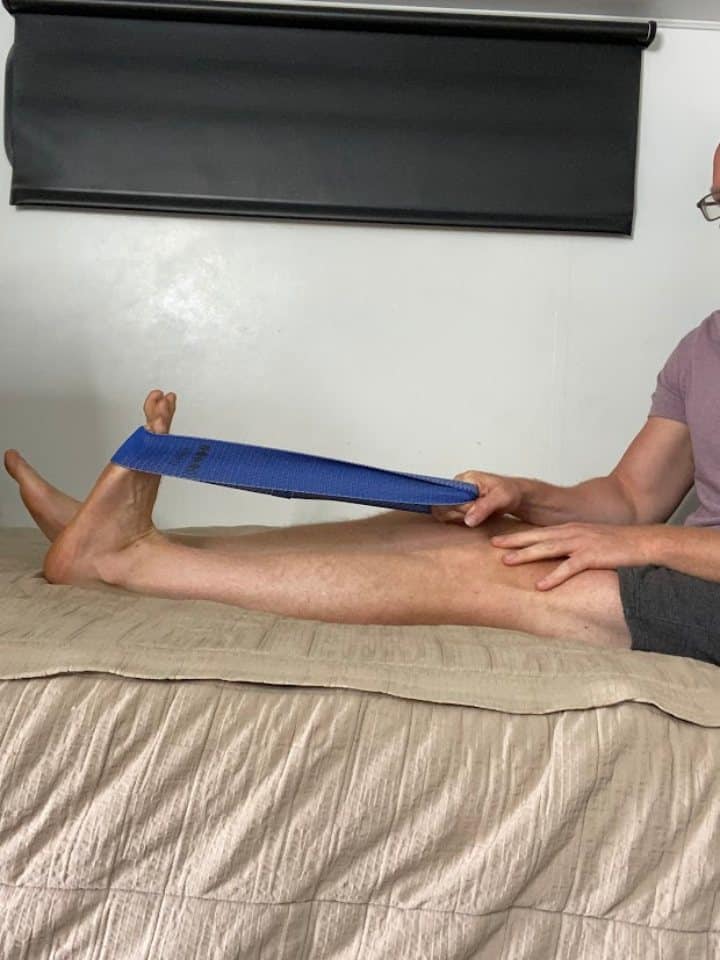
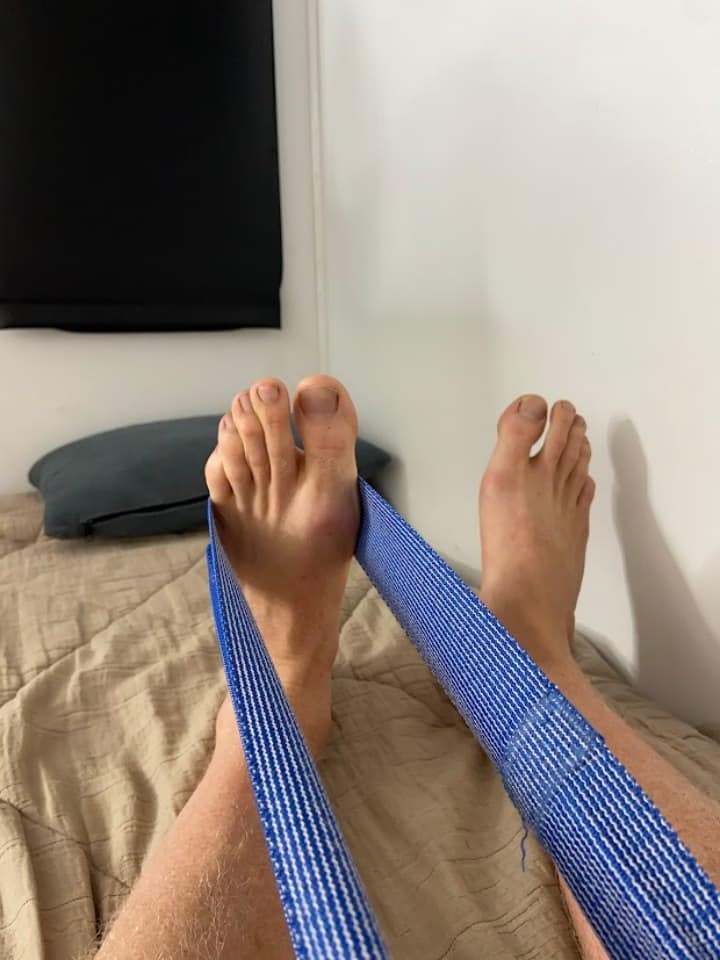
- Starting position: Sitting on the floor or your bed with the legs stretched in front of you.
- Tie a resistance band (light, medium or heavy resistance) around one foot at a time.
- Hold the band with the opposite arm.
- Slowly dorsiflex and evert the ankle, moving away from the band, then return to neutral.
- Repeat 10-15 repetitions for 2-3 sets.
2. Plantar Fascia Stretch
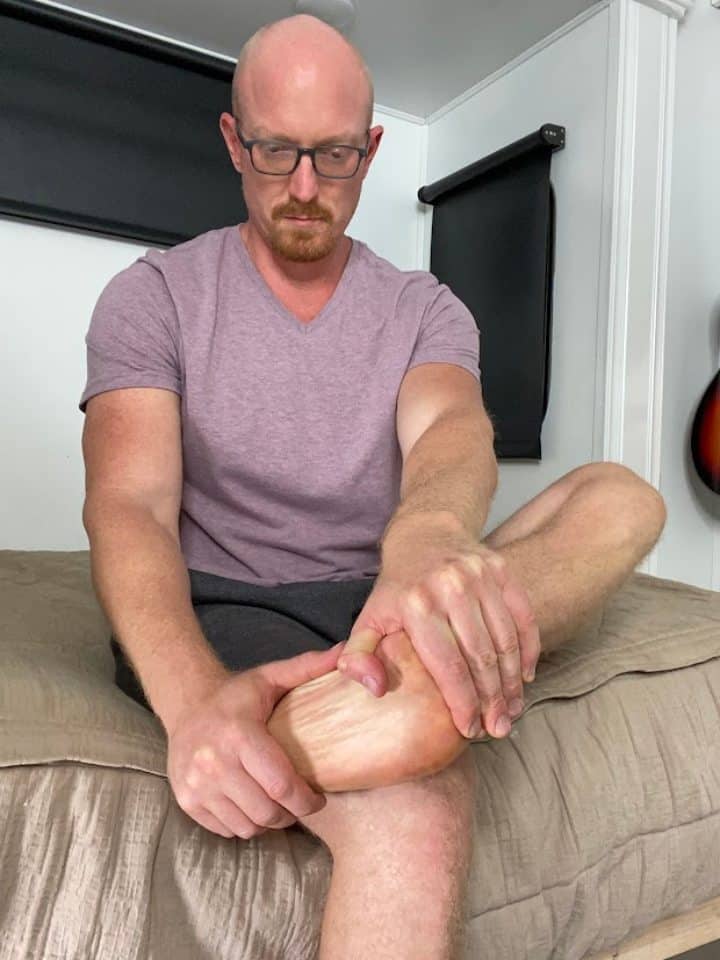
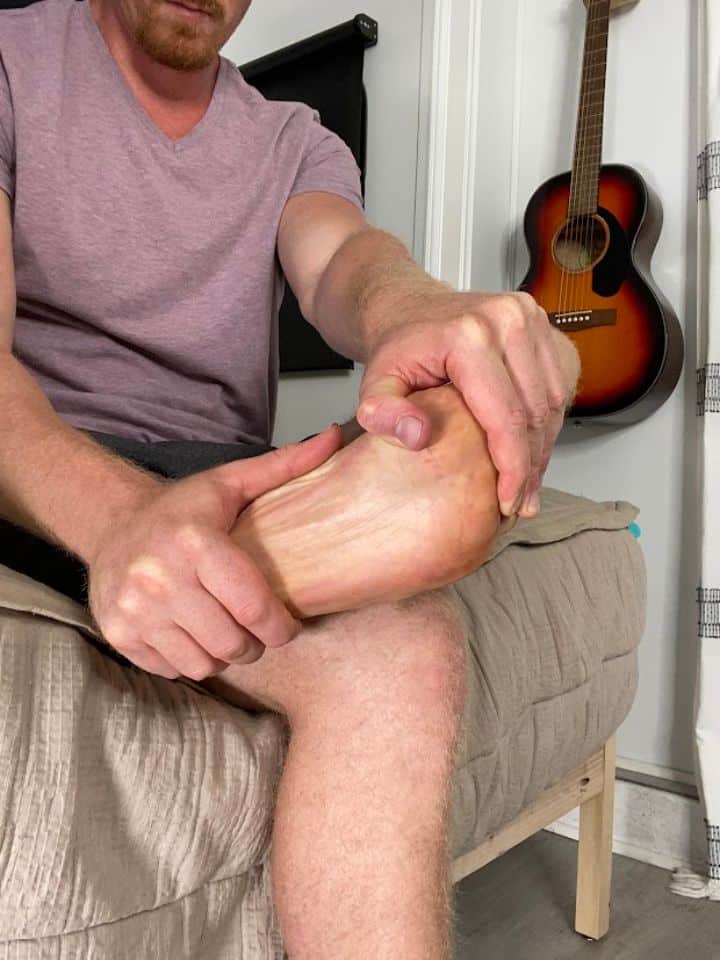
- Starting position: Sitting in a chair with the leg to be stretched either in front of you on the floor or crossed over the opposite leg (like a Figure 4).
- Place one or both hands on the plantar surface of the foot, over the ball of foot and toes, and give a gentle pull back until you feel a stretch.
- Hold for at least 30 seconds or up to 1 minute. Repeat on the other leg.
An Alternative Way to Strengthen the Outer Ankles with a Resistance Band
Surgery:
Conservative management is more successful in cases where a high arch is not associated with a neurologic condition. Sometimes as the neurologic condition advances, the high arches may worsen.
Surgery, if needed, is aimed to release the tight soft tissues associated with high arches, realign bone or joint abnormalities, and help create as much balance as possible in the entire foot/ankle complex.
Summary of Arch Type
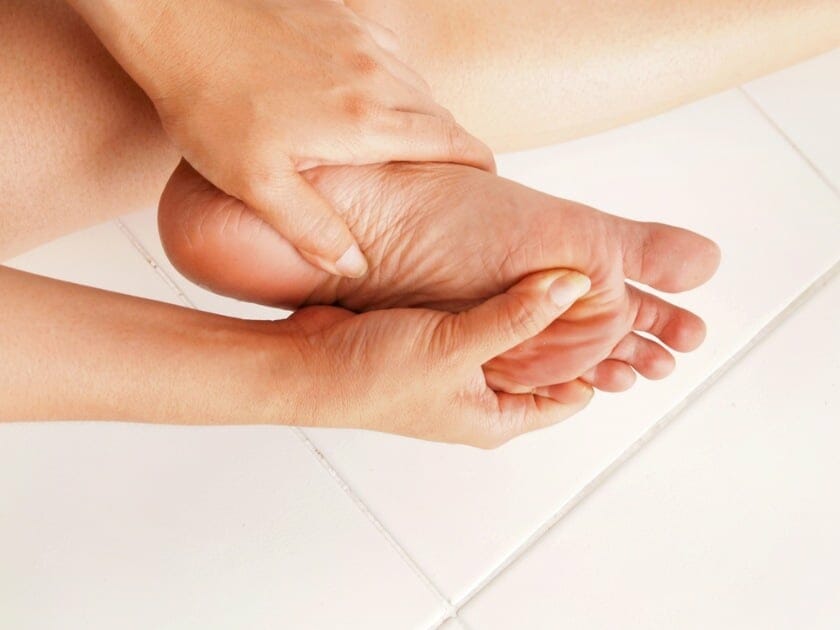
Flat feet and high arches both have their own challenges and effects on mobility, but there are treatment options available.
Make sure that if you’re dealing with either one of these arch types that you take a proactive approach and consult with a healthcare professional.
Not only will this be important to prevent or treat associated pain, but also to ensure there are no additional underlying medical conditions causing your particular arch type.
FAQ:
What type of healthcare professional can I see about my arches?
The following medical practitioners can be consulted about your arches: primary care physician, podiatrist, orthopedic specialist, and a physical therapist. If you have high arches and there is concern about a neurologic condition, you will want to see a neurologist.
Where can I go if I need custom shoes or orthotics for my arches?
There are medical professionals and companies who specialize in assessing, measuring and fitting an individual for a custom shoe or orthotic. Your medical doctor may know of local referrals in your area to help you.
Can I still workout and participate in sports if I have flat feet or high arches?
Yes!
It’s important to remain active no matter what physical condition you’re managing. You just have to go about it the right way.
Depending on your goals, you may have to make adjustments or modifications to your foot wear, use additional orthotics, and participate in a specific exercise program that acknowledges and addresses your particular arch.


